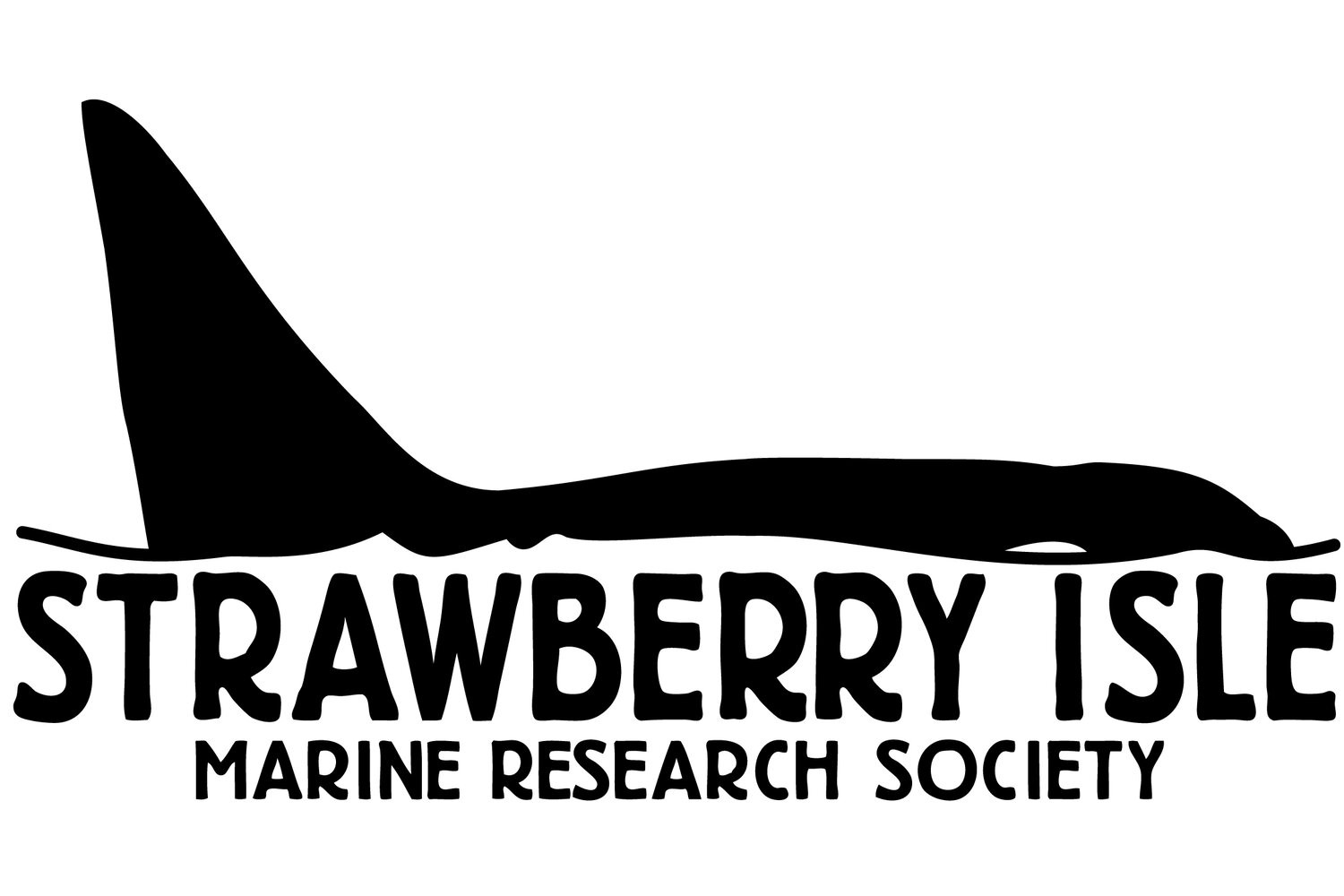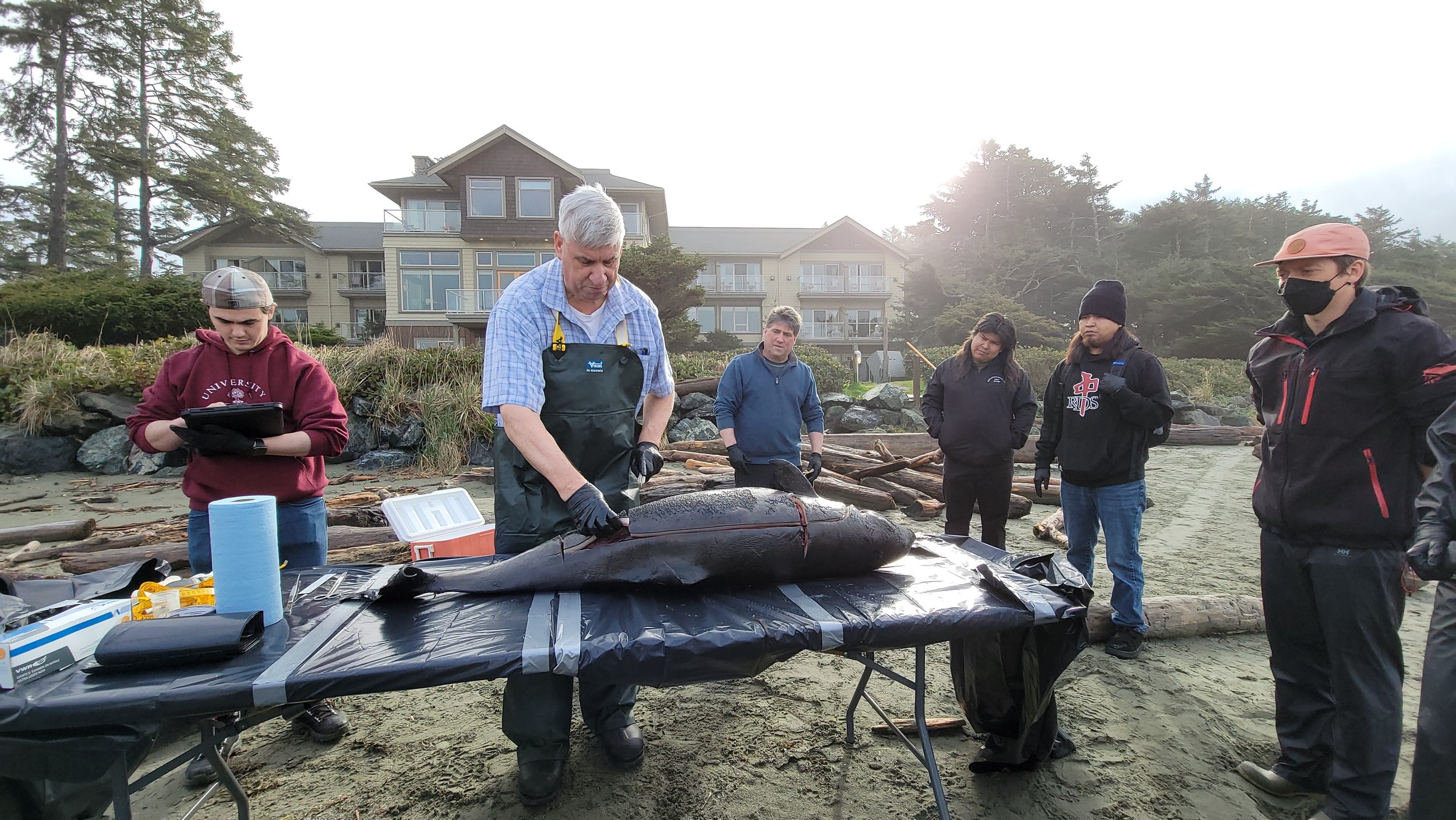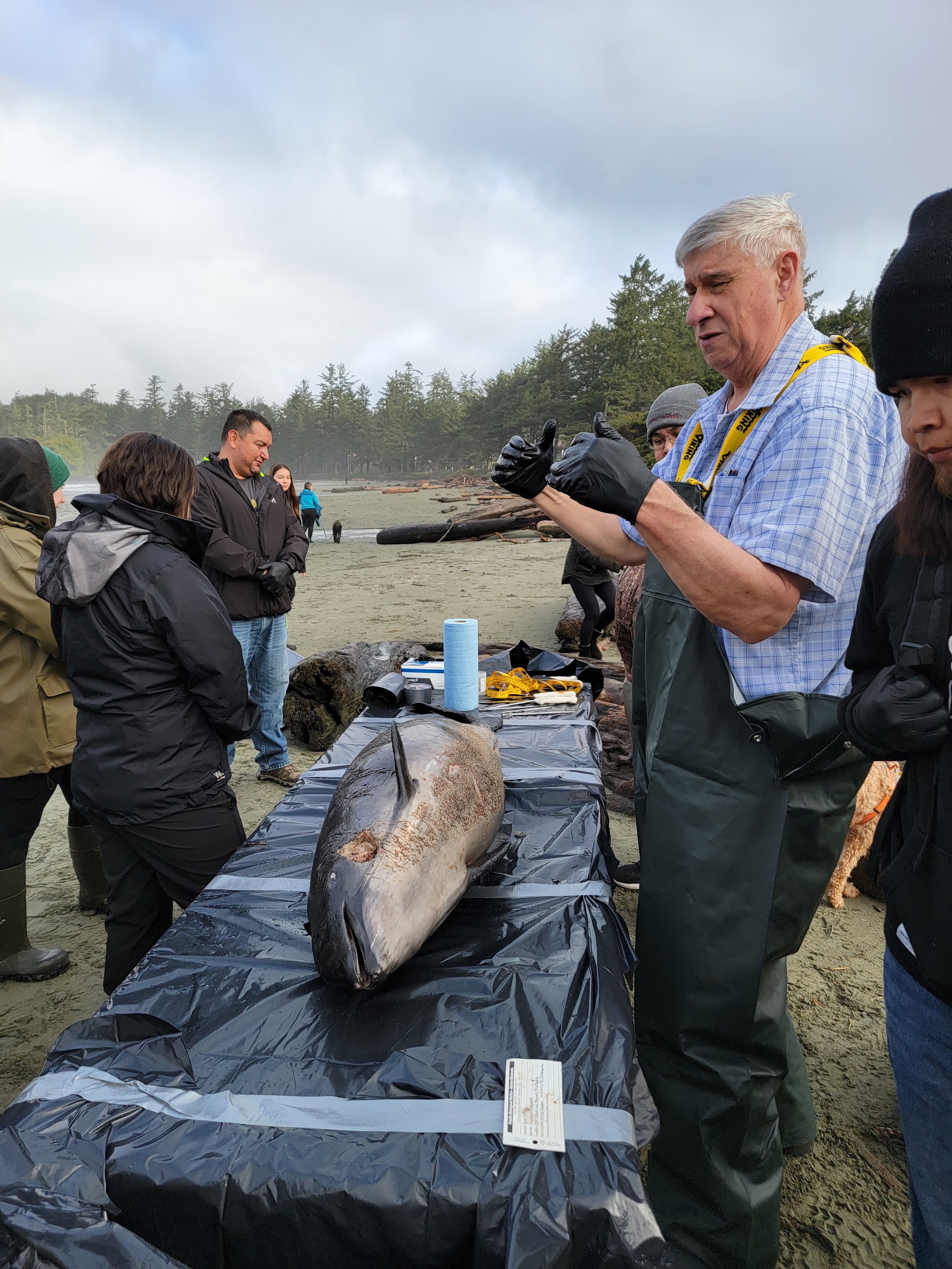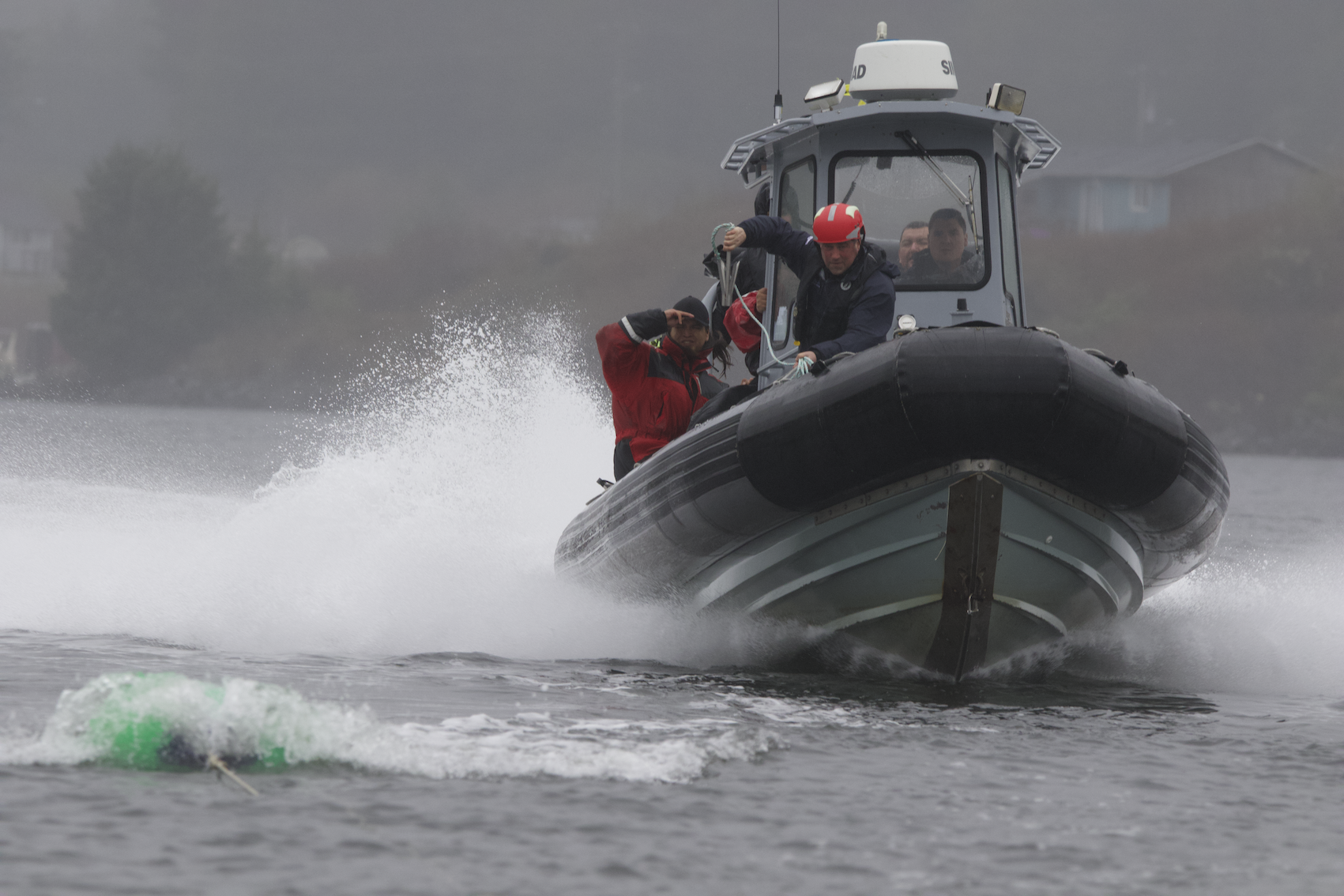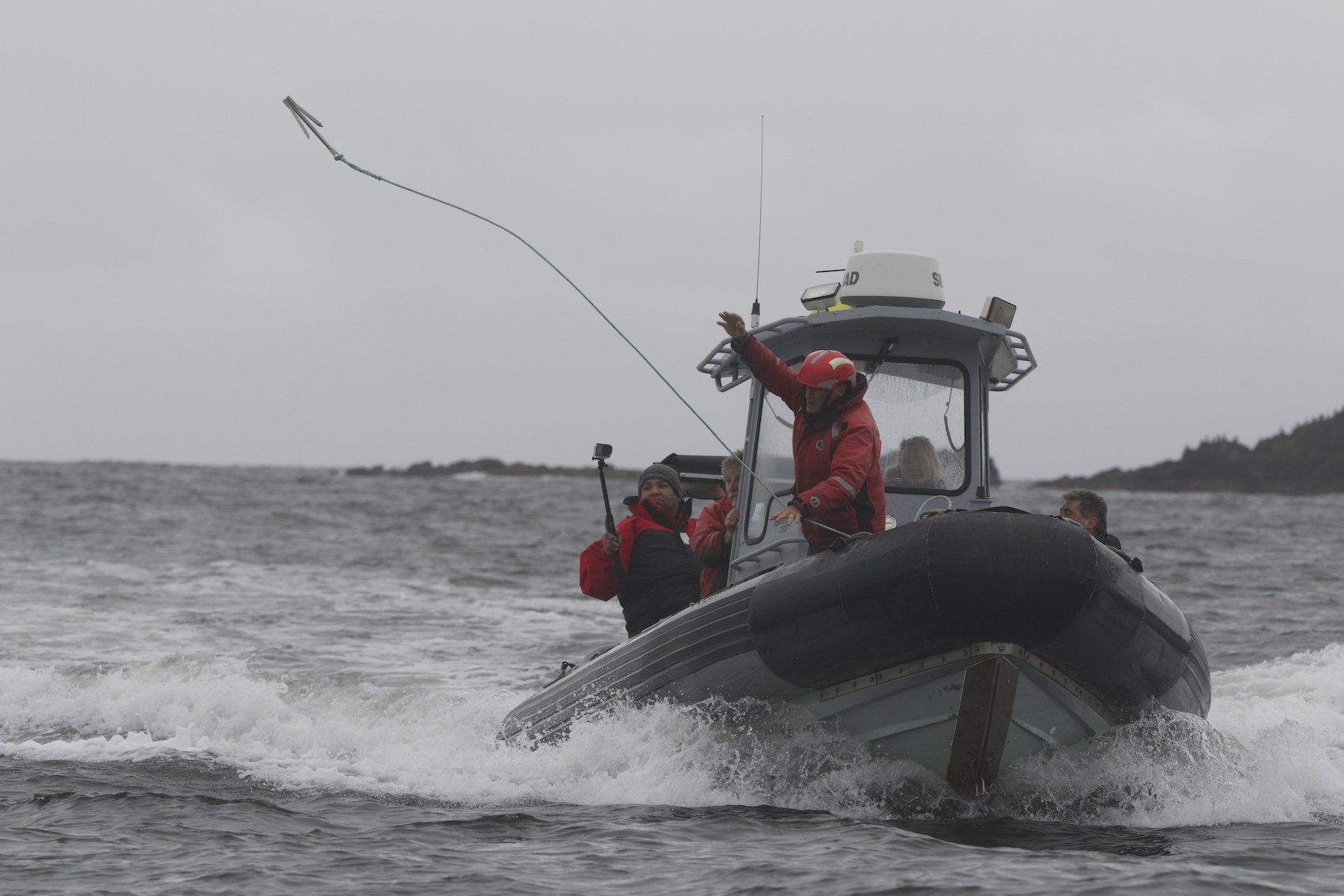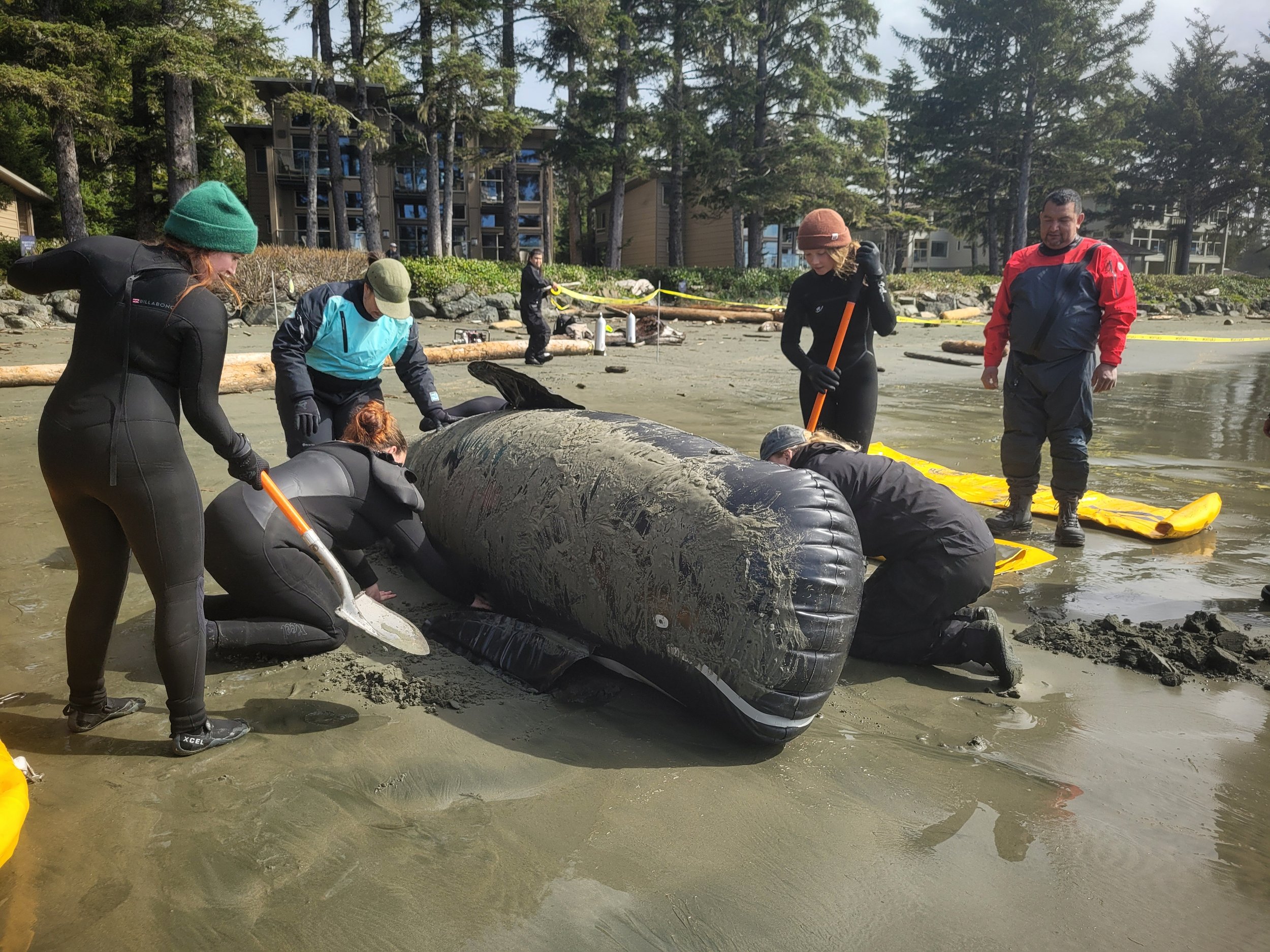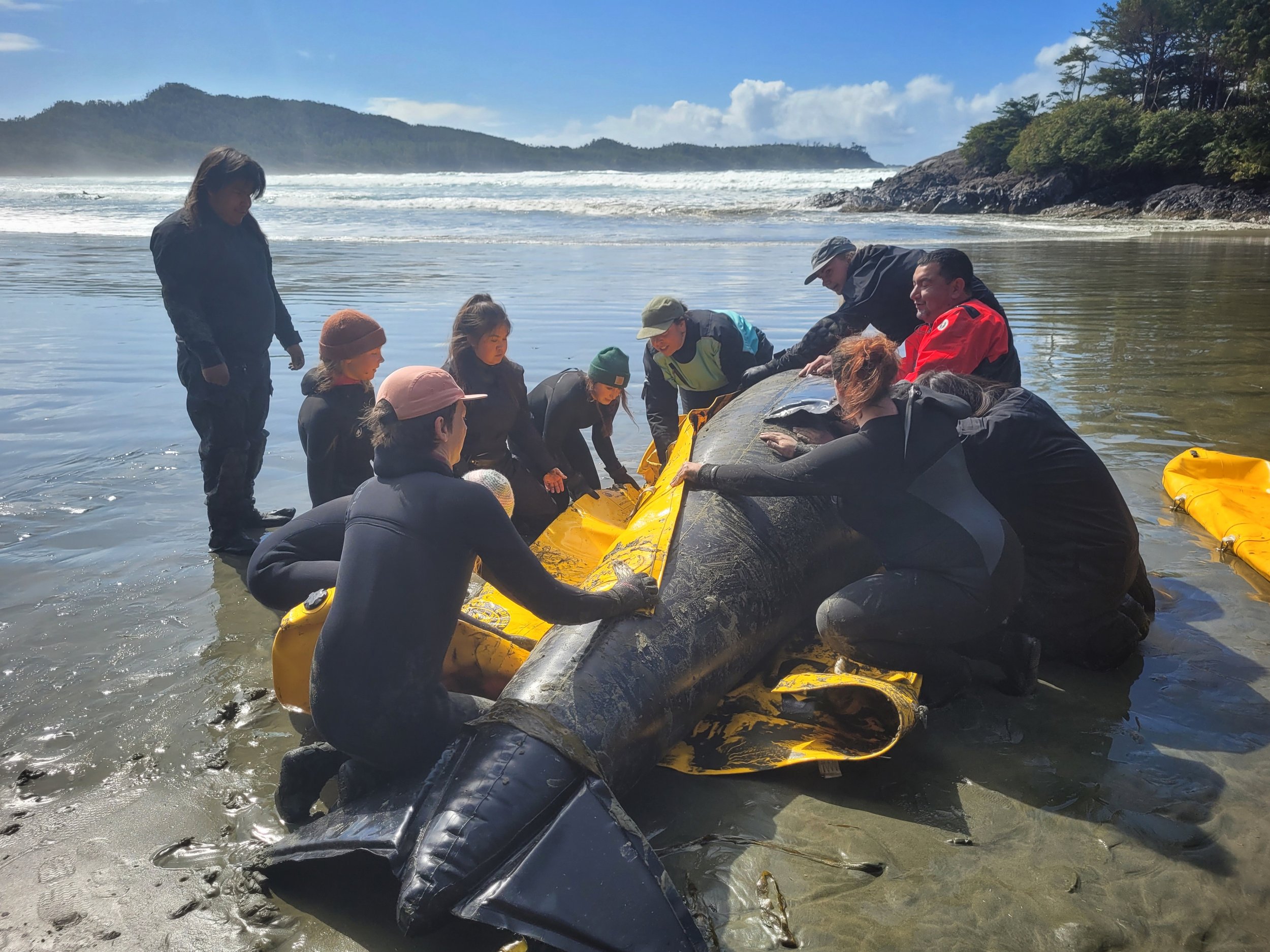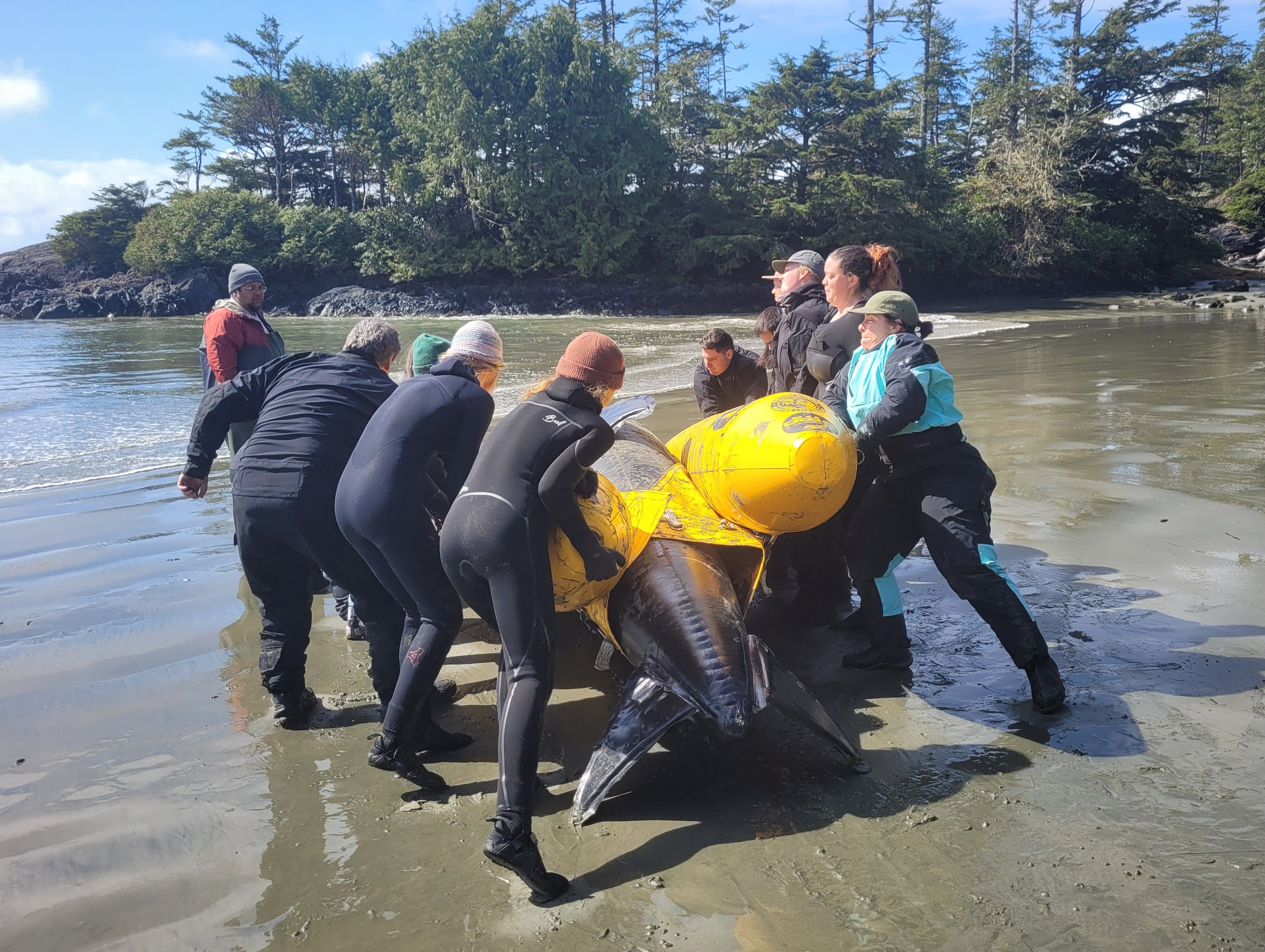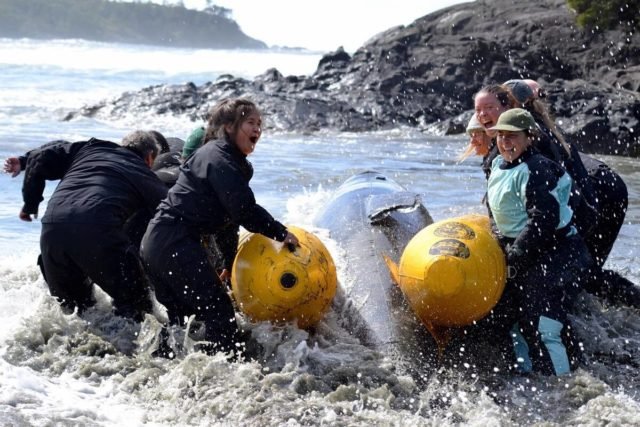How to Save a Whale… and Other Marine Mammals
/We all know how lucky we are to be living where we do, under the moss-beds and fern laden trees on the farthest edge of the North American West Coast. Where the Pacific Ocean crashes on our rocky shoreline and rolls into the occasional lucky bay as surf, for us sadistic cold water surfers.
I don’t know about you, but sometimes, I find myself staring out at the ocean and suddenly notice that I am holding my breath. I’m not sure what exactly it is that I am waiting for, but you never know around here.
We live so close to the edge, with nature and all of our fellow animals, that it isn’t uncommon for us to cross paths. Whether it's the blow of a whale against the horizon as you drive by in your boat, walking your dog by a deceased Sea lion washed ashore, or bumping into a molting Elephant seal in town on your way to the Co-op to get groceries (yes, all true stories).
It is important to know how to deal with the animals in our environment, and that is why SIMRS is part of the BC Marine Marine Mammal Response Network. A team made up of dedicated animal-lovers and ocean nerds from government, research, education and outreach organizations, wildlife rescue groups and citizens, trained to respond to your reports of dead, sick, injured or harassed marine mammals.
Last month we were thrilled to have Paul Cottrell, the whale-disentangling master and DFO’s Marine Mammal Coordinator, come down to our two small towns for some rescue training, and let me tell you, we had a whale of a time (sorry, I couldn’t resist that one). So here is my ‘how-to’ guide for saving whales and other marine mammals.
Day 1- Necropsies. If you see a dead marine mammal, don’t touch it. They have infectious agents that can be transmitted to humans and pets. Call the DFO hotline: 1-800-465-4336.
Donning my rubber gear and protective gloves, I help hoist up our mysterious marine mammal body on a table set up on the beach at Cox Bay in Tofino. Living in Ucluelet I would never give Tofino the upper hand, but even I have to admit it is one of those perfect clean days at Cox and I stare longingly at the ocean to keep my mind off the smell of decaying marine mammal (a smell equal to no other, I promise you that). As we unwrap our project for the day, I see some of the hotel guests stop eating their breakfast upstairs.
Standing next to Dr. Stephen Raverty, who is wearing jeans, a shirt rolled up past his elbows and only small gloves, I feel braver. We look down at the dead Harbor porpoise and Dr. Raverty pulls out his filet knife. Leading our team through a necropsy, we examine each part of the body for any clues about its cause of death. When a marine mammal dies it is veterinary pathologists, like Dr. Raverty, that investigate the body for any underlying health issues, and what that might reveal about the greater health of our ecosystem.
Day 2- How to catch a whale (and then free it from entanglement). If you see an entangled marine mammal, report it: 1-800-465-4336 and standby if possible. Do not intervene. Effective disentanglement requires training and the right tools to give the animals the best chance of survival and reduce the risk to both humans and animals.
“Whale-on!” I shout, holding on at the bow as our boat goes full speed ahead, in hot pursuit of the entangled ‘whale’. Once we’re within a few meters, I throw my grappling hook and line across the entanglement gear as hard as I can. Pulling back on my line, I give the grapple a hard yank to make sure it’s securely hooked on the gear and quickly toss the rest of my rope and the attached buoy overboard. Now my satellite tracking tag and buoy are nicely bobbing behind the entangled whale. Mission accomplished! This allows us to locate the whale, and the buoy slows the animal down to increase our chances of approaching the whale to assess the entanglement, and remove the debris.
Day 3- Live Standing Rescue. Call the Marine Mammal Incident Reporting hotline:1-800-465-4336 (this number should be burned into your brain by now).
Our team walks down the beach for our next training challenge, watching tourists splash around in the surf and dogs zoom by chasing each other. It is a busy day at Cox beach, the sun is out (for once) and the surf is big. As we round the corner we see our project, a very realistic looking (and weighing- we later find out that Paul and his team have filled it with water) life size Juvenile Killer whale stranded on the beach. Our task is to move the stranded whale back into the water.
So how do you move an entire whale or dolphin off a beach? With a lot of sweat and muscle it turns out and, thankfully, something called a reflotation kit. Paul shows us the kit and explains the basics, but he leaves it to us to figure out the rest and work as a team to organize the rescue.
First step, we cordon off the area to keep the public and animal at a safe distance, this also gives us room to work. Second, we fold our sling and, working with team members on both sides of the whale, we gently rock the animal (remember, it’s filled with water and weighing several hundred pounds at this stage). I’m starting to sweat. Digging under the whale just deep enough to slip the sling underneath it. Ouch- remember to stay clear of its flapping tail fin. Third, the sling is now securely under the whale, we attach the pontoons to either side of it and fill them with air. Now we have our refloation device ready to go.
Four, the next step is moving the animal. 14 people, split up on either side of the animal, we count to three (softly, no need to stress the whale out any more) and lift and shuffle forward. Again, and again, for roughly 15 meters, until we reach the water (and I thought my arms were burning during the whale-wrangling the day before). Step five. Somehow no one took into account the size of the surf coming into the bay. Our team now simulates holding the animal in the water for 25-40 minutes as it acclimatizes. Battered by the swell we endure for a couple of minutes, but in reality this step is vital for ensuring the animal does not subsequently restrand itself after its release.
Step six, “Woohoo!”, lots of cheering and then trying to empty the ‘whale’ of water in the surging surf (great idea Paul).
Day 4- Sea lion disentanglement. Report your sightings: 1-800-465-4336. Whales aren’t the only marine mammals that get entangled, smaller species like seals, sea lions, sea turtles and sharks are also at risk. Fishing line, netting, ropes and anything with a loop provides a high risk of entanglement. These debris become embedded as the animal grows and can cause infection, an inability to feed properly and may even lead to death.
It is the last day of our Marine Mammal Response training and we get to go out into the field and respond to a real call. Two sea lions have been reported in the Ucluelet Harbor over the last few days, one with a rope around its body and the other a loop cutting into its neck.
We meet at the dock just outside the Island West Resort Marina and wait for the sea plane to land with the Vancouver Aquarium staff, the one man who knows how to dart a sea lion and his famous cocktail of drugs designed for the job. To rescue smaller marine mammals, like the sea lions, the expert team uses darted anesthetics, which safely allow us to remove the entanglement, and then we reverse the anesthetics effects. Ready to go we head out in our boats, cameras and dart at the ready.
My eyes are burning as I scan the shoreline and haulouts with my binoculars and long lense for our entangled fellas. “Bark, bark, bark”, I can barely hear myself think. The Ucluelet harbor is notorious for having an unusual amount of sea lions around its docks, who have learnt that humans mean fish, a dangerous assumption for them. Nothing. Looks like our sea lions got word of the swat team, and are nowhere to be found in the harbor or surrounding Broken Group area.
It is situations like these that remind us how important it is to report marine mammal incident sightings. Strawberry Isle Marine Research Society has been working at the frontline for the last 30 years, with the help of our community, to respond to animals in distress, support population recovery efforts and scientific research, and reduce the threats to these animals.
We are lucky to have some of the most beautiful marine life here in BC, and a sad reality is that half of our 31 marine mammal species are listed under SARA (Species At Risk Act) as Endangered, Threatened or Special Concern. We know so little about the environmental and human factors affecting these animals. Through the Marine Mammal Response Network we can better understand the threats that they face in our waters, such as vessel collisions, entanglements in debris and fishing gear, diseases, contamination, noise disturbance, and illegal disturbance and help support their recovery.
I don’t know about you, but I want to keep looking out at our ocean, holding my breath, and waiting for something spectacular to happen.
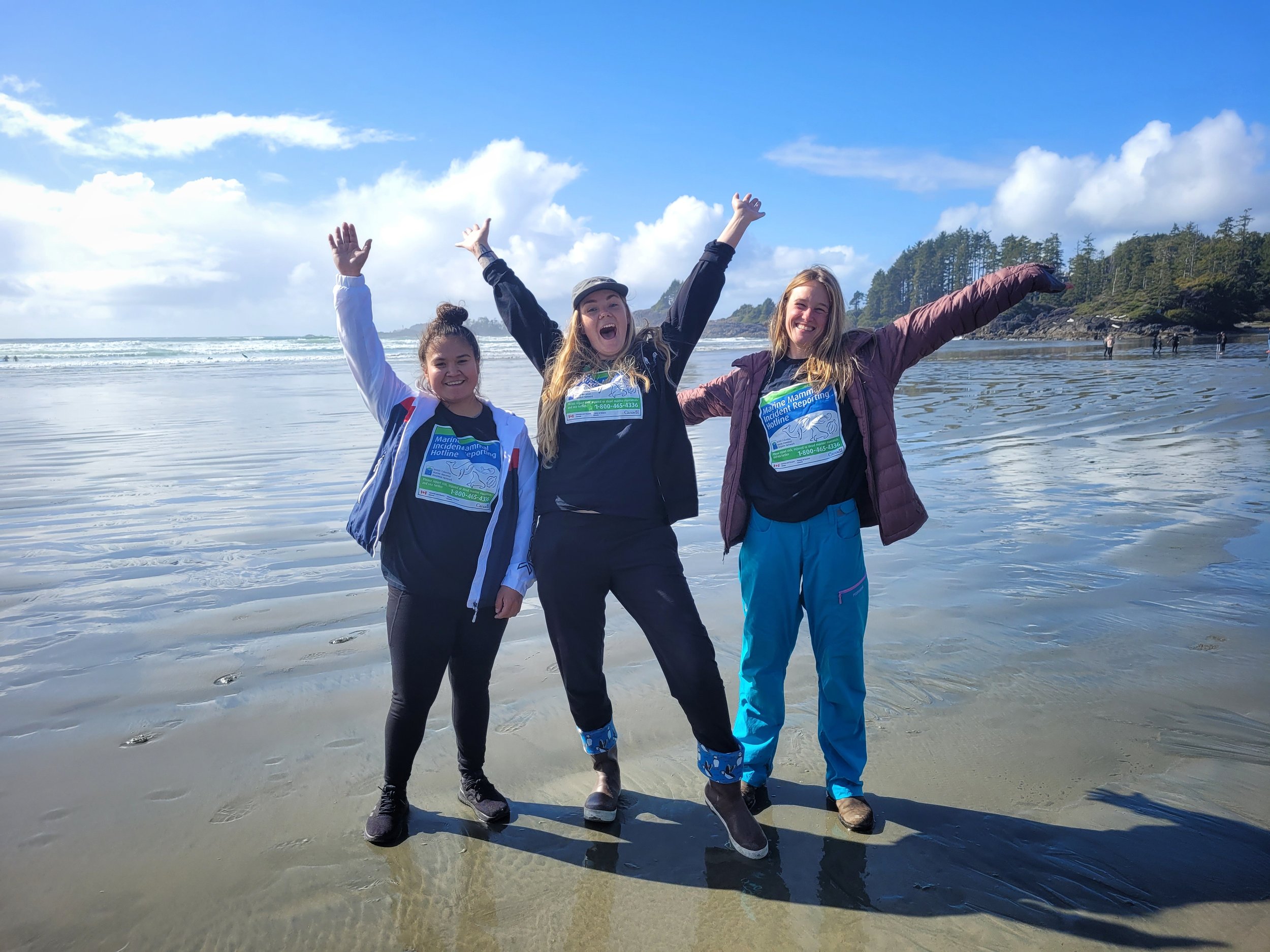
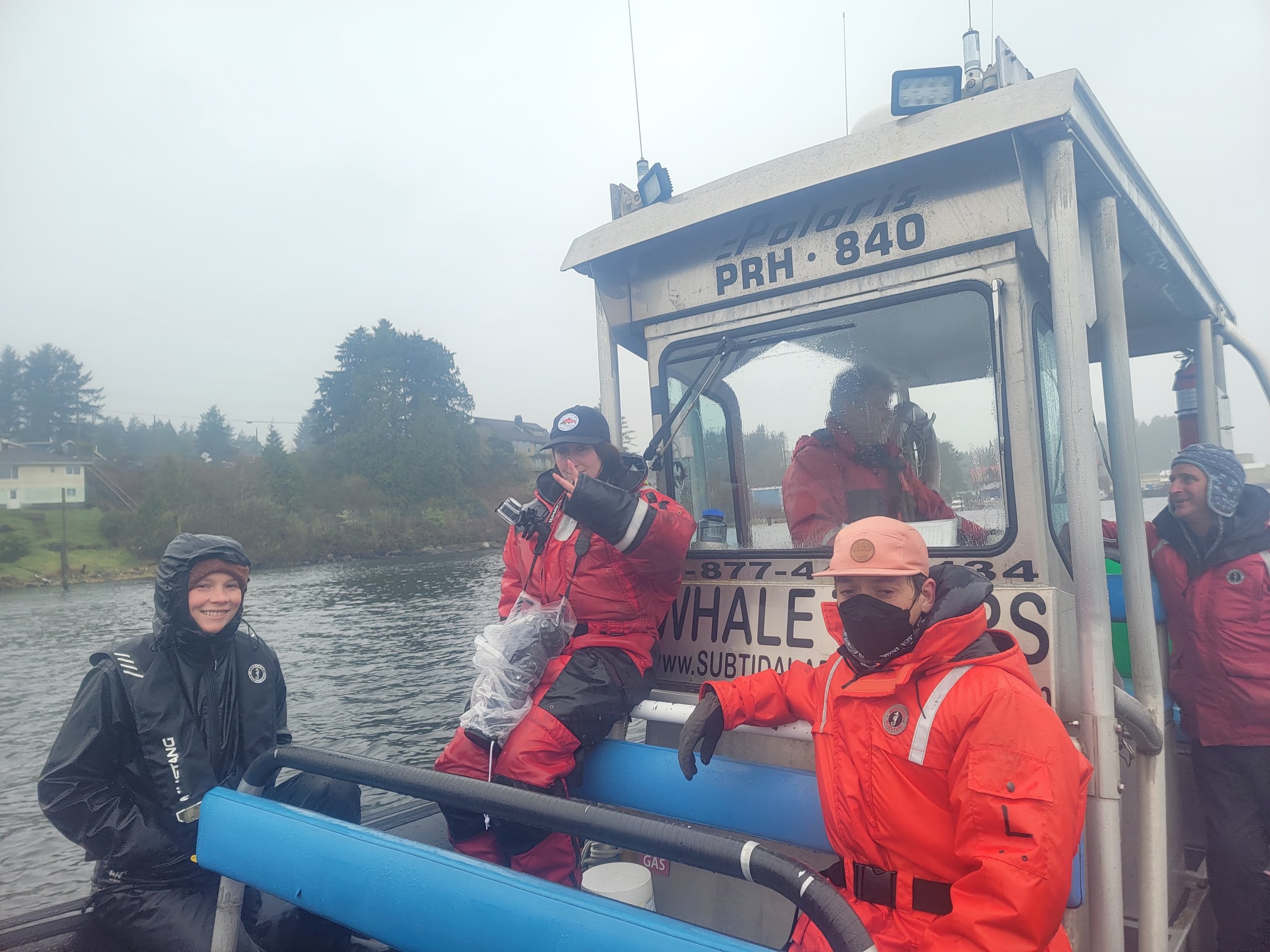
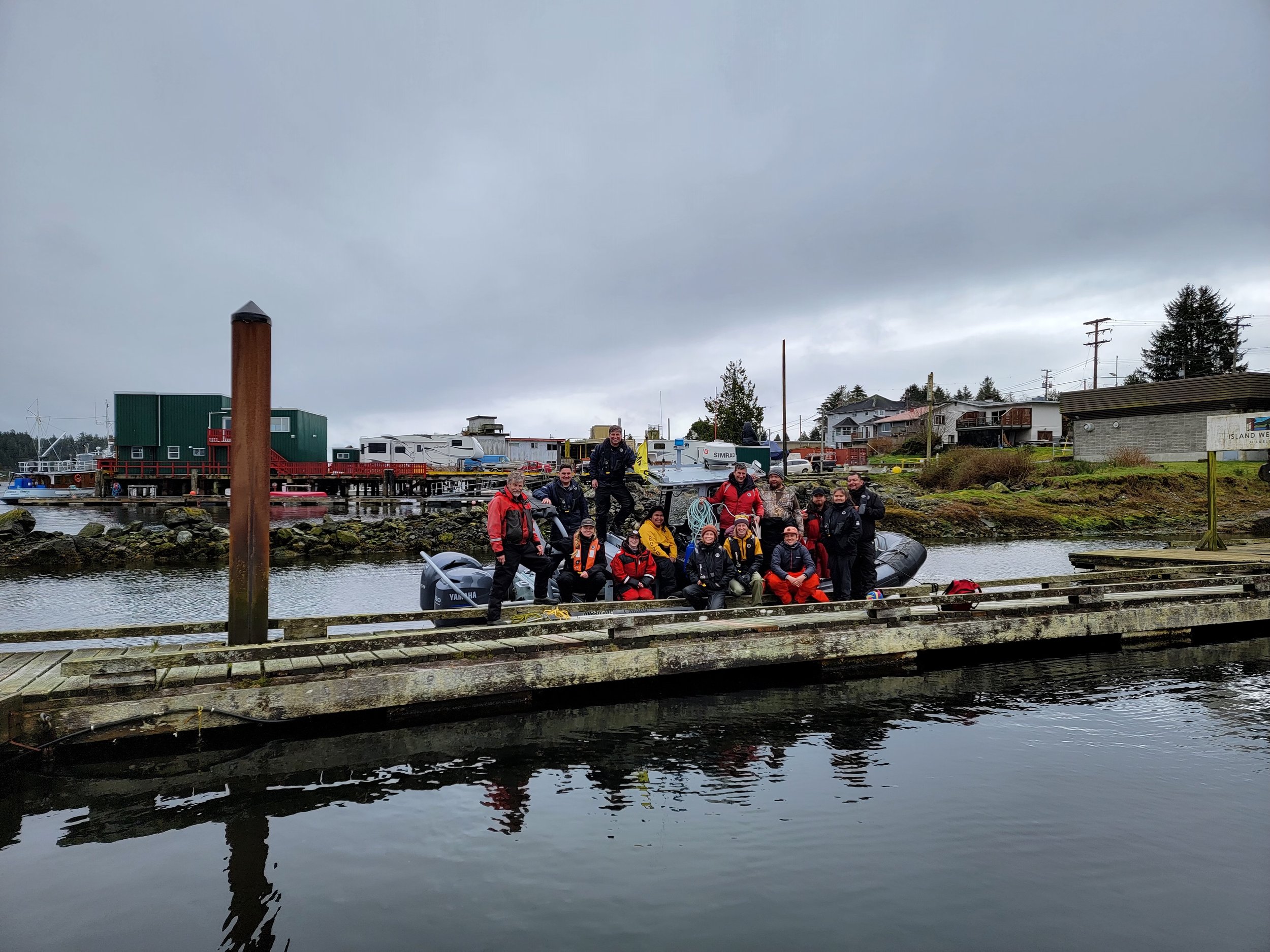
A big thank you to Paul Cottrell, Dr. Stephen Raverty, and the Vancouver Aquarium for coming out to help with the training, and to our fellow trainees from Parcs Canada, the Nuchatlaht First Nation, Mowachaht/ Muchalaht First Nation, and Ahousaht First Nation. Thanks also to Subtidal Adventures and Jamie’s Whaling Station for helping our team out on the water with boats.
If you see a dead or distressed marine mammal please call our hotline as soon as possible: 1-800-465-4336.
Sightings of healthy whales, dolphins, porpoise or sea turtles can also be submitted directly to SIMRS via info@simrstofino.org or through the Whale Report App.
By Sophie Vanderbanck, Programs Coordinator and Operations Assistant
Thanks to Sydney Dixon, Nora O’Malley and Marcie Callewaert for the photos.
